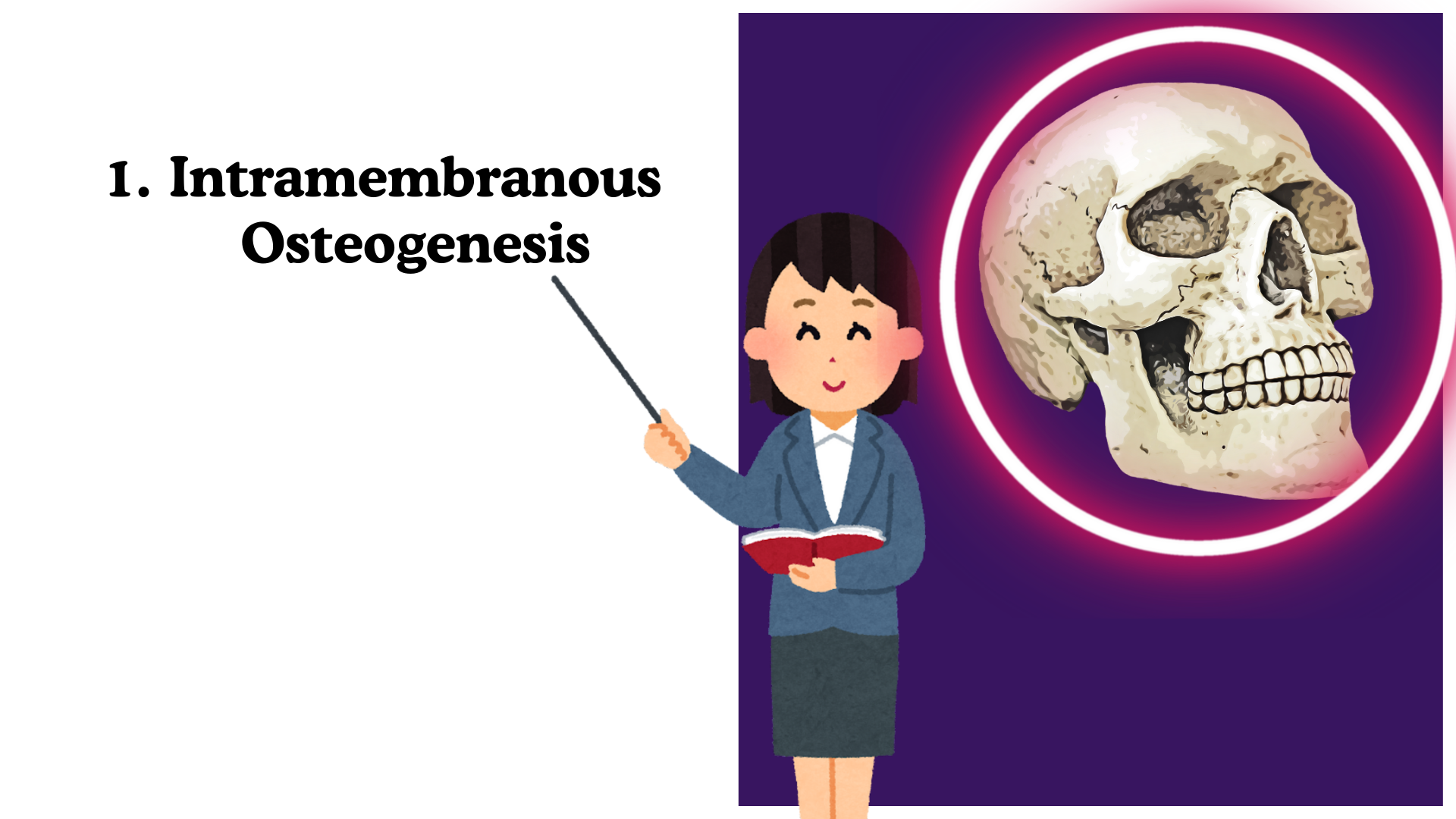Development of Bone
Osteogenesis and Ossification
What is Osteogenesis?
Osteogenesis, also known as ossification, is the process through which bones develop from their embryonic precursors. This complex process is essential for the formation of the human skeleton, which begins to take shape during early embryonic development.

Early Form of Skeleton In the early stages of embryonic development, the skeleton is initially composed of two primary structures:
- Fibrous Membranes
- Hyaline Cartilage
These structures serve as the precursors to the bones that will eventually make up the adult skeleton.
Final Form of Skeleton As development progresses, these initial structures are transformed into the bones of the adult skeleton. Depending on their origin, the final bones can form from either fibrous membranes or hyaline cartilage.
Development of Bones
Bone development, or osteogenesis, occurs through two primary methods:
1. Intramembranous Osteogenesis
2. Intracartilaginous Osteogenesis
1. Intramembranous Osteogenesis
Intramembranous osteogenesis is the process by which bones develop directly from mesenchymal tissue, a type of embryonic connective tissue. This method is primarily responsible for the formation of flat bones, such as those of the skull and face.
Process:
a) Membrane Formation: The mesenchyme condenses to form fibrous membranes in specific areas of the embryo.
b) Osteoblast Activity: Osteoblasts, which are bone-forming cells, begin to act on these membranes through two key processes:
- Osteoid Formation: Osteoblasts first lay down an unmineralized matrix known as osteoid within the membranes.
- Mineralization: The osteoblasts then secrete an enzyme called alkaline phosphatase, which catalyzes the mineralization of the osteoid by depositing calcium phosphate crystals.
Outcome: This process leads to the formation of membranous bones, which are part of the adult skeleton.

2. Intracartilaginous Osteogenesis
Intracartilaginous osteogenesis, also known as endochondral ossification, is a method of bone development in which bones are formed from pre-existing hyaline cartilage models.
Process:
- Cartilage Model Formation: In the embryo, models of hyaline cartilage are formed as precursors to bones.
- Primary Ossification Center: A primary center of ossification develops within the cartilage model, initiating the process of bone formation. Bone tissue gradually begins to replace the cartilage in a well-organized manner.
- Secondary Ossification Centers: Later in life, one or more secondary centers of ossification may appear at the ends of the bones. These centers continue the process of bone formation, often contributing to growth and development during childhood and adolescence.
Outcome: This method is responsible for the development of most of the bones in the body, particularly long bones such as those in the arms and legs.

Conclusion
Osteogenesis, the process of bone development, is fundamental to the formation of the human skeleton. Through intramembranous osteogenesis, bones form directly from mesenchymal tissue, while intracartilaginous osteogenesis involves the transformation of cartilage models into bone. Together, these processes ensure the proper development and growth of the skeletal system, from the earliest stages of embryonic life through adulthood.